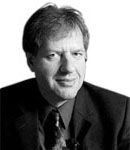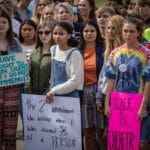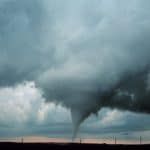Misadventures at the U.S. Energy Department
By Hugh Gusterson | December 25, 2007
Getting into a public talk at the Energy Department has become a surreal exercise, which is worrisome considering all the notoriously mismanaged agency is charged to do.
I had intended to write this month’s column about a talk given by Tom D’Agostino, head of the
National Nuclear Security Administration (NNSA), on his plans to reorganize the nuclear weapons
complex for the twenty-first century. Instead, I’m writing about why I wasn’t allowed to hear
D’Agostino’s talk.
A friend had forwarded an e-mail message from the NNSA saying that on December 18, D’Agostino
would “announce his vision for the future of the nuclear weapons complex” at the Energy
Department’s headquarters in Washington. Since I’m in the midst of writing a book on the
transformation of the nuclear weapons complex, this sounded like just the event for me. As the
message took the form of a press release, I called D’Agostino’s office and asked if university
professors such as myself were allowed to attend. “Of course,” I was told, “come on down.”
When I arrived at the Energy building, I was told to get a pro forma badge from the front desk.
The guard put information from my driver’s license into her computer and started to print my badge
when she casually asked, “You’re a U.S. citizen, right?” As it so happens, although I’ve lived in
this country for 27 years and have possessed a green card for 14 of those years, I’m a British
citizen. I knew from watching others that if I nodded, no one would check my citizenship and I
could proceed unhindered to D’Agostino’s talk; but, alas, my mother taught me to always tell the
truth. (Many years ago, this is how I got a ticket for an illegal U-turn when the cop offered me an
easy out by asking if I’d seen the no U-turn sign in the dark. But I digress.)
The guard then said she would need to look for my name on “the list,” reaching for a sheaf of
printed pages. I hoped that this was a list of dangerous foreigners, and that my name was not on
it. Instead, it was a list of approved foreigners, and my name was not on it.
Another guard was called. He peered at my green card, turning it over and over; he then asked,
“But are you a U.S. citizen?” Twice. This seemed an odd question to ask someone with a green card.
He looked uncomfortable: He didn’t want to turn me away, but he didn’t want to let me in either. He
started calling numbers in the building to find someone to tell him what to do. I protested that I’d
been to a public hearing in the building just a few months earlier with no problem. The first
guard then said that anyone was allowed in, even foreigners, if it was a public event. Was this a
public event? I said yes. They looked skeptical. Neither guard had heard of D’Agostino, one of the
five most important people in the building, or his speech, which made the front page of the next
day’s
Washington Post.
At this point, I spied George M. Bernier III, the NNSA’s Congressional Affairs Officer, who I
recognized from other Energy events. I asked him if he could vouch to the guards that this was a
public event. Instead, he came over to the guards and announced that only media and Energy
employees were allowed in. If this was so, Energy clearly had a problem since I had just seen an
anti-nuclear activist get a badge and go through to D’Agostino’s talk. It also meant that, even if
I were a U.S. citizen, I was still barred from the event. New rules! In the course of a few hours,
this event had gone from being open to the public to being open to the public except for foreigners
to being closed to the public.
Ironically, if I had stayed home, I could have listened to D’Agostino’s talk without difficulty,
since the press release gave instructions for tuning in by satellite dish, as well as an 888 number
one could call to listen. Apparently foreigners are allowed to listen by phone–at the U.S.
government’s expense, no less.
My misadventure on Independence Avenue was a trivial event, but it encapsulates in miniature
everything that is wrong with Energy. There was disagreement among Energy employees on the basic
rules of admission, so that whether you got in depended on which employee you asked; a rule against
admitting foreigners that, in the absence of any checking mechanism, was left to the foreigners
themselves to enforce; two guards who had no idea what was happening in the building they guarded,
and who were clearly terrified of exercising discretion; one guard who didn’t know what a green
card was; and an event that was being broadcast by satellite and over an 888-number but was closed
to foreigners in the flesh.
Even by the standards of the U.S. government, Energy is notorious for its mismanagement. While
it keeps holding press conferences to announce new, more efficient organizational charts, the
situation on the ground goes from bad to worse. The day I was turned away from Energy headquarters,
the press announced a $2.8 million fine for an Energy contractor, the University of California,
stemming from more than 1,000 pages of classified documents from Los Alamos National Laboratory
found in a drug bust at a trailer park–the latest in a series of security lapses at Los Alamos
that go back at least to the Wen Ho Lee case. Meanwhile, Energy’s National Ignition Facility at the
Lawrence Livermore National Laboratory is about 300 percent over budget and six years behind
schedule, while the dual-arm hydrotest facility at Los Alamos, more than $300 million later, failed
when it was tested at full power.
My comical experience at Energy’s front door suggests a lumbering bureaucracy that doesn’t know
what it’s doing and whose parts don’t communicate with one another. How then can we expect such an
agency to steward the nation’s aging nuclear stockpile, solve the nuclear waste problem, and bring
new energy technologies to fruition?
Together, we make the world safer.
The Bulletin elevates expert voices above the noise. But as an independent nonprofit organization, our operations depend on the support of readers like you. Help us continue to deliver quality journalism that holds leaders accountable. Your support of our work at any level is important. In return, we promise our coverage will be understandable, influential, vigilant, solution-oriented, and fair-minded. Together we can make a difference.
Topics: Columnists















